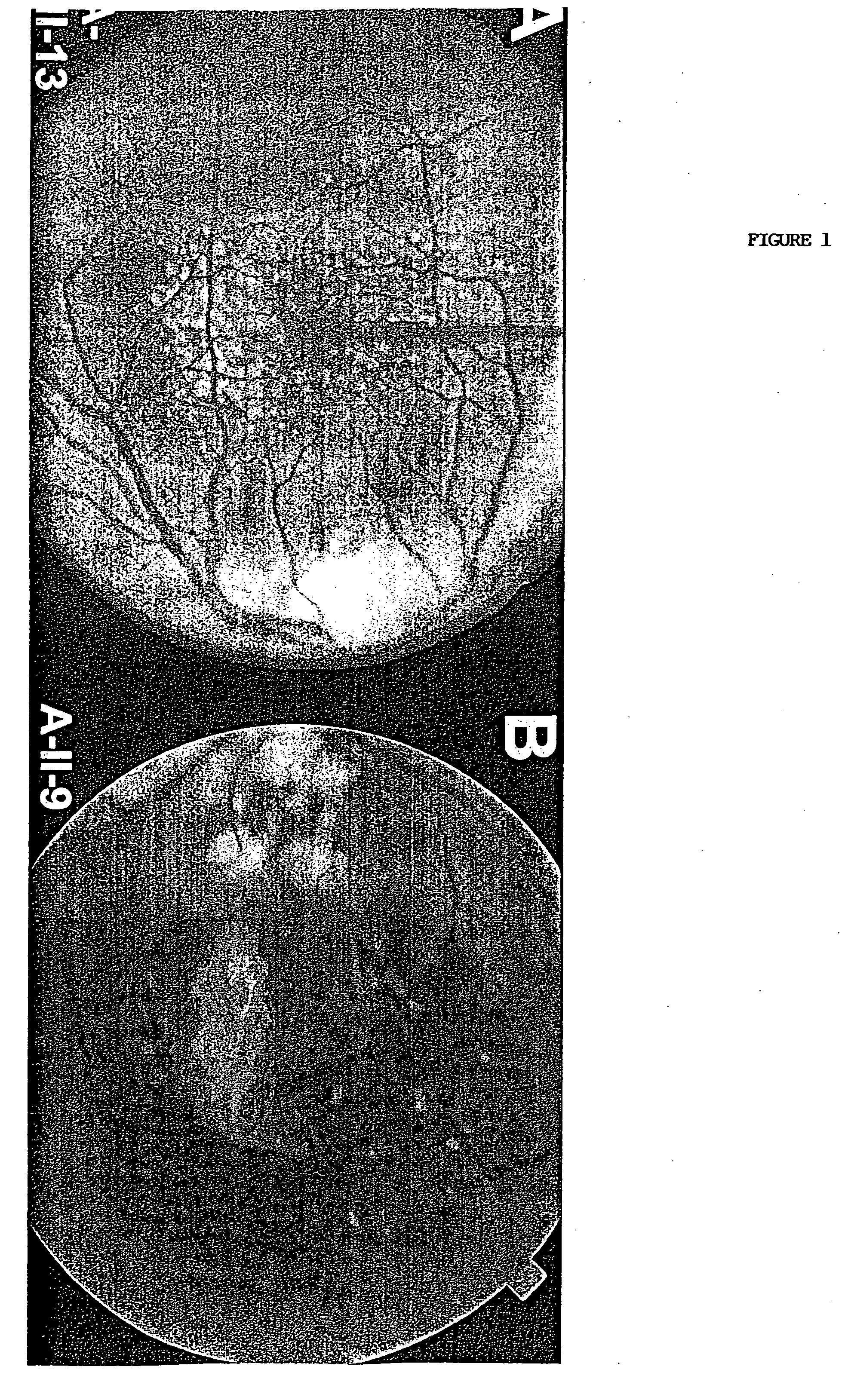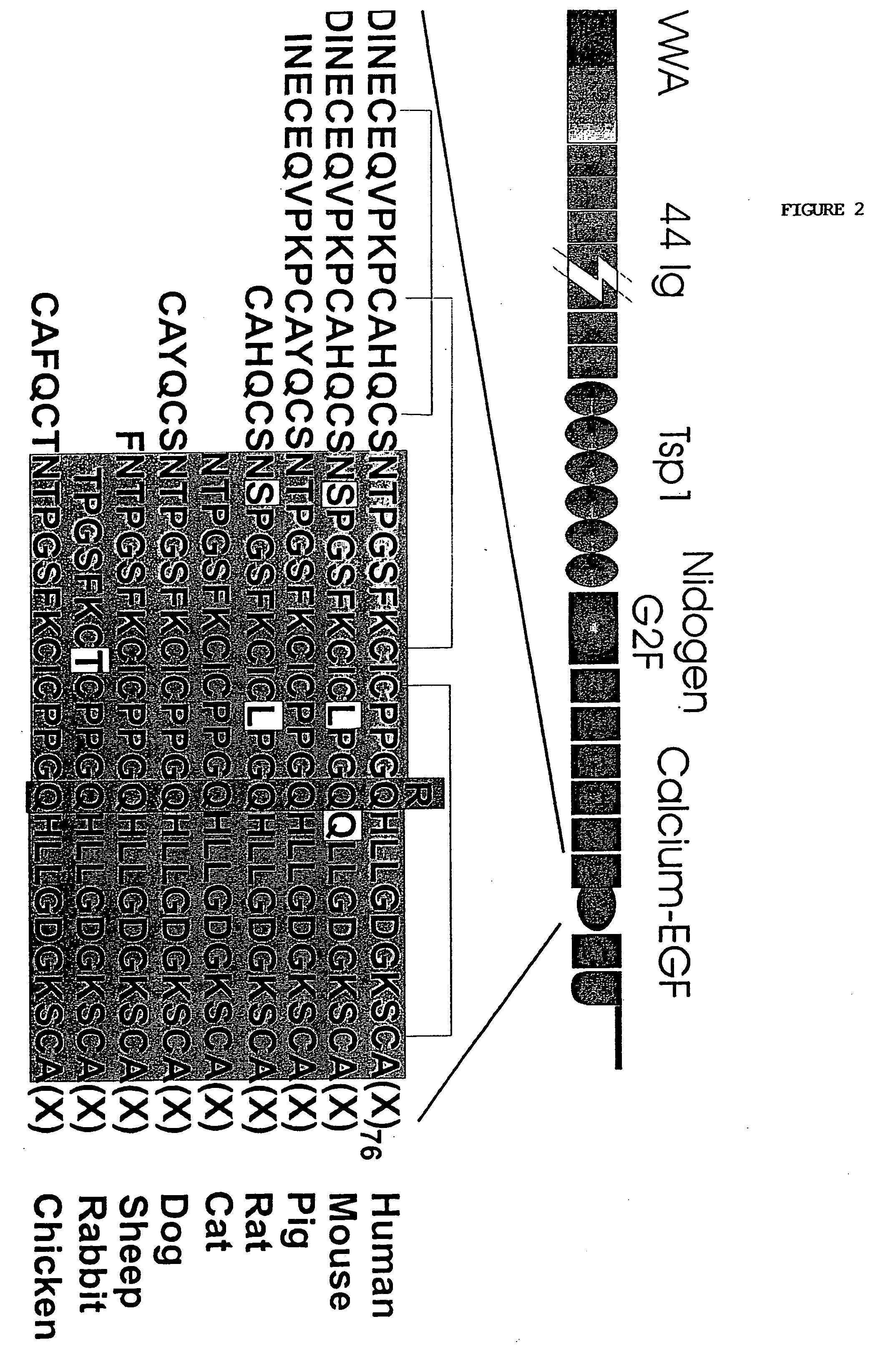Gene mutation associated with age-related macular degeneration
a gene mutation and age-related technology, applied in the field of age-related macular degeneration, can solve the problem that current treatment methods have only achieved limited efficacy
- Summary
- Abstract
- Description
- Claims
- Application Information
AI Technical Summary
Problems solved by technology
Method used
Image
Examples
example 1
Identification of a Family Carrying an AMD-Associated Gene
[0104] Twenty-one individuals from a family with AMD agreed to participate in the original study, which was approved by the Institutional Review Board of Oregon Health Sciences University, Portland. For all but one individual, stereoscopic fundus photographs of the macula of both eyes were obtained. For the remaining individual, now deceased, the eyes were retrieved for histopathologic analysis. Clinical information, including visual acuity, was obtained for all affected individuals. In most instances, this information was obtained from the individual's local ophthalmologist or optometrist, and fundus photographs were taken at a local retina facility.
Classification of AMD
[0105] Stereoscopic fundus photographs of the macula were classified using a modified version of the Wisconsin Age-Related Maculopathy Grading System. Each eye was classified independently by three ophthalmologists without knowledge ...
example 2
Screening Family for AMD-Associated Mutation
Subject Ascertainment
[0111] Human subjects were informed and consented as mandated by the Institutional Review Board of Oregon Health & Science University. Approximately 20 ml of blood was collected from each subject and DNA was extracted by standard techniques. In total, 100 families with three or more members affected with AMD, 188 sporadic cases of AMD, and 174 phenotypically normal individuals were studied. The diagnosis of AMD was based upon stereoscopic fundus photographs as previously described. (Klein M L, Arch Ophthalmol 116:1082-8, 1998.)
Mutation Screening
[0112] Two monoallelic strains (human-mouse cell hybrids), derived from proband 111-3 of family A, were generated by GMP Genetics, Inc. (Waltham, Mass.). One carried the ARMD1 region corresponding to the disease haplotype and the other, a presumably non-disease sequence. Inclusion of the ARMD1 gene locus in the hybrids was verified in the laboratory by genotyping with six ...
PUM
| Property | Measurement | Unit |
|---|---|---|
| Electrophoretic mobility | aaaaa | aaaaa |
Abstract
Description
Claims
Application Information
 Login to View More
Login to View More - R&D
- Intellectual Property
- Life Sciences
- Materials
- Tech Scout
- Unparalleled Data Quality
- Higher Quality Content
- 60% Fewer Hallucinations
Browse by: Latest US Patents, China's latest patents, Technical Efficacy Thesaurus, Application Domain, Technology Topic, Popular Technical Reports.
© 2025 PatSnap. All rights reserved.Legal|Privacy policy|Modern Slavery Act Transparency Statement|Sitemap|About US| Contact US: help@patsnap.com



